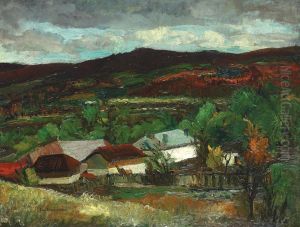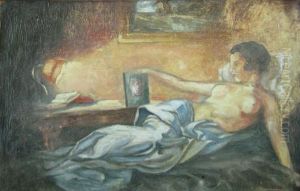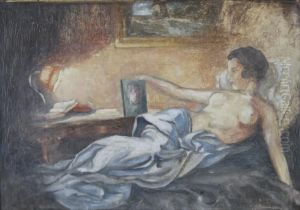Ion Diaconescu Paintings
Ion Diaconescu was a Romanian artist known predominantly for his contributions to sculpture. Born on February 25, 1917, in the village of Potlogi, Dâmbovița County, his artistic journey began in an era marked by political upheavals and the emergence of modernist trends in art.
Diaconescu's early life was characterized by his engagement with the local art scene and his formal education at the School of Fine Arts in Bucharest, where he honed his skills and developed his unique artistic language. His studies were interrupted by World War II, but he resumed his education after the war, graduating in 1948.
In the post-war period, Romania was under communist rule, which imposed strict regulations on artistic expression. Despite the restrictive environment, Diaconescu managed to pursue a successful career. His work often reflected the socialist realism style that was mandated by the state, but he also explored other themes and techniques within the limits of what was permissible.
Throughout his career, Ion Diaconescu participated in numerous exhibitions both in Romania and abroad, showcasing his sculptures which were often characterized by their robust, yet elegant forms, and their ability to convey a sense of motion and life. His public commissions include several monumental works that still stand in Romania today.
Diaconescu's legacy extends beyond his sculptures, as he was also a dedicated educator, training generations of Romanian artists through his teaching positions at various institutions, including the Nicolae Grigorescu Institute of Fine Arts in Bucharest.
He passed away on October 27, 2004, leaving behind a body of work that continues to be celebrated for its contribution to Romanian art. Diaconescu's sculptures can be found in museums, public spaces, and private collections, serving as a testament to his skill and creativity as an artist.


